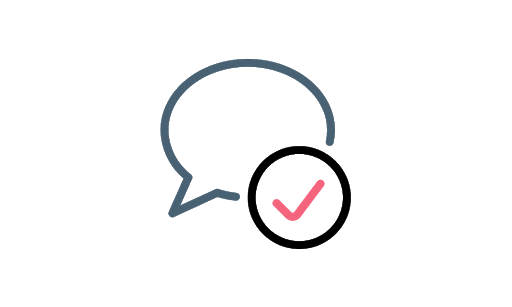I’ve noticed a pattern when talking to people who have worked in customer support at early-stage startups. As someone who runs customer support teams, I’m always interested in connecting with people who have this experience, regardless of how short their stint was.
The conversation will go something like this, starting with me asking:
Me: Oh, you handled support at Company X. Why did you leave X?
Them: I loved support. I was clearing the inbox every day, but I was getting burned out. When I talked to my boss about adding someone else to the team, the conversation didn’t go anywhere.
Me: So what’d you do?
Them: I left for a position in a different role at Company Y.
Me: What happened to support at X when you left?
Them: Oh, right. They ended up hiring 3 people to keep up with the inbox.
Maybe I’m missing something, but some back-of-the-napkin math says her manager could have added one person to the team like she recommended, given her a 50% raise, and still come out ahead. And the customers wouldn’t be left adrift while three new support hires learn the ropes.
So why didn’t that happen?
There’s this weird thing in customer support where we’re almost shy about rewarding—with higher salaries—queue-based performance. The doubts, which take about 30 seconds to conceive, sound something like this: “But support is much more than answering tickets,” or perhaps, “Throughput is nice, but what about quality responses?”
We’ll deal with the objections in a second. First, we have to recognize how we stand to benefit by properly valuing queue-based performance in customer support. Imagine a world where you’re able to attract and retain the very best people to support your customers and create a closed feedback loop for improving the product in response to what customers value. The result would be better products and happier customers.
Optimizing for queue-based performance will help you create that world.
Why you should optimize for queue-based performance
First, let’s narrow the scope of our discussion to speak specifically of customer support at growth-minded product companies where (1) customer experience is a differentiator and (2) support professionals are expected to help shape the product to serve evolving customer needs.
Both points are important. If you value customer experience as critical to the success of your brand, you want highly skilled individuals serving your customers—and you want to figure out how to retain those individuals. To the second point, if you intend to improve your product in response to what customers value, it’s crucial for the same smart people who interact with your customers on a regular basis to be vocal champions of their wants and needs.
If you say, “Yes, I want someone who is an expert at this technical craft of delivering high-quality customer service, can do it very quickly and empathetically, and provide crucial feedback to the product team."
Then, you should optimize for that—and be willing to pay a premium for it.
Because when it comes to throughput, the more adept and empathetic your support professional is at solving tickets, the faster they’ll get through the queue. Then, they’ll be able to bionically build those solutions into the product. Either way results in happier customers.
Now, let’s look at the objections that might be raised to this type of performance-based model.
Objection! What About Quality?
Quality matters. If Nathan replies to 60 customers in a day and Alex replies to 40 customers—but Nathan’s replies appear rushed and tone-deaf compared to Alex's empathetic responses—you’ll rightly question the value Nathan is providing in terms of quality customer service.
To optimize for queue-based performance, you first have to control for quality. How do you do that? At FullStory, we’re using MaestroQA to evaluate our responses to customers based on our watchwords of empathy, clarity, and bionics. Other ways to control for quality include Customer Satisfaction Score (CSAT), Customer Effort Score (CES), and Net Promoter Score (NPS), each with their own benefits and tradeoffs.
Even while having high standards for quality, we’ve noticed that the very best people in customer support can deliver quality responses very quickly. They’re able to serve more customers in a shorter amount of time without sacrificing a warm, personable tone.
Objection! Isn’t Support About More Than Just Answering Tickets?
The most responsive way to support customers is by improving the product. Meaning, if you have a bug that generates a significant number of customer emails per day and you have a choice to respond faster (perhaps by adding headcount to customer support) or to fix the underlying problem (perhaps by forwarding all the relevant information to engineering), you’d likely choose the latter so that customers no longer encounter the bug in the first place.
By rewarding queue-based performance, the objection goes, you’re valuing responsiveness at the expense of improving the product. This is a valid concern, and if people in customer support spend 100% of their time in the support queue, they won’t have time to come up for air to create the feedback loops necessary to improving the product.
Thankfully, this challenge can be overcome. At FullStory, we control for this problem by structuring customer support so that our senior practitioners spend 40% of their time outside of the queue. Not only does this ensure we retain the best people—burnout is real, y’all—it also ensures that the people closest to the customer maintain a direct feedback loop with the product team.
How to Set the Bar High
Once we’ve controlled for quality of response and for the feedback loop to improve the product, we’re in a place where it makes sense to figure out how to value high performers in the customer support queue. To value high performers, you can create individual contributor levels within the practice and justify higher compensation bands at the higher levels.
For example, at FullStory, you can’t be a senior member of customer support without being an expert at your craft. We set the bar high and structure the practice in such a way so we can attract and retain the best talent. We look at expertise in three broad areas:
Communication with customers
Queue-based productivity
Extra-queue-rricular work 😉
These criteria drive the levels that help us distinguish between a senior member of customer support and someone who is newer to the craft. Senior members are able to handle the most difficult customer conversations, serve more customers in less time, and execute higher-leverage work with their time outside of the queue.
The nice thing about having clear criteria is that the math works out. If one of the outputs of customer support is providing high-quality responses to customers, it makes sense to pay people more if they’re able to support more customers in less time, assuming you control for quality and the feedback loops that improve the product. Bonus: giving customer support professionals time outside of the queue is itself a much-appreciated benefit that helps you to attract and retain the best talent.
Queue-Based Performance is a Win-Win-Win
You might be thinking, "This is great. But will it work for my team?" It's a good question. We know that what works for us may not work for all organizations. For starters, if you're not using a product like FullStory to connect the online experiences of your customers to their requests for help (i.e., support tickets), your workflow will be markedly different. For example, using FullStory means we don't need to ask our customers for screenshots or lengthy explanations about what they were doing before they reached out.
Additionally, we're a SaaS company. (For some context, we serviced 1200 tickets in the last month.) SaaS customers are demanding folks. They expect a lot out of the products they spend so much money on—products they rely on to do their job. Having an efficient, master-level support team is a must-have if you want happy customers.
For other businesses—say, eCommerce—the support model can change in meaningful ways. But the human nature of your customers? Same as it ever was. Delivering exceptional customer support can make all the difference between being a Kmart or a Nordstrom.
Whether you’re a SaaS startup or an established eCommerce company, it’s our hope that these tips will help you think differently about support and how to prioritize employees who excel at delivering fast, empathetic answers to your customers’ most pressing needs.
If you should optimize for queue-based performance, you might find that doing so yields happier employees, more loyal customers, and significantly higher-quality products and experiences—we sure did.







